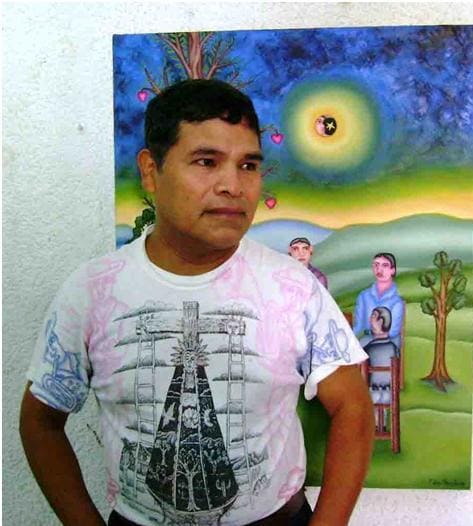Morales, Felipe – Mexico
1959 | Latin American Art

Felipe de Jesús Morales was born in 1959 in San Pedro Mártir Ocotlán, Oaxaca. From a young age, his interest in the arts led him to join the Rufino Tamayo Plastic Arts Workshop, becoming part of the “first generation” of this distinguished group. He also complemented his training at the Oaxaca School of Fine Arts and in the printmaking workshop of Juan Alcázar.
At the age of fourteen, he began his artistic career, and in 1989, he held his first exhibition in the city of Oaxaca. From then on, his work began to travel across Mexico and to various countries, including France, Canada, the United States, and Japan, where his creations were recognized and admired.
Felipe Morales’s work focuses on the representation of Oaxacan culture, its landscapes, and religious beliefs, blending elements of pre-Hispanic tradition with Catholic influence. However, the artist’s approach does not seek a faithful reproduction of reality. His elongated figures, with a characteristic naif touch, are developed in spaces where perspective and syncretism play a vital role, complemented by vivid and warm colors that reinforce the symbolism in his compositions.
Influenced by great masters such as Rufino Tamayo and Rodolfo Morales, Felipe Morales succeeded in creating a unique language that merges the magical realism of Oaxacan art with the traditions of his homeland. His work displayed at Museo Ralli stands out for its scenes that, through the combination of everyday symbols and visual elements, uniquely represent the cultural identity of Oaxaca.
Felipe Morales’s style can be defined as naif, inheriting indigenous iconography, with a strong emphasis on symbolism. Throughout his career, he has remained faithful to the traditions of his region, while also leaving his personal mark on contemporary art. His work has left an indelible mark on the artistic scene not only in Oaxaca but also on the international stage, establishing him as one of the great references of Mexican folk and contemporary art.
RELATED PROGRAMS